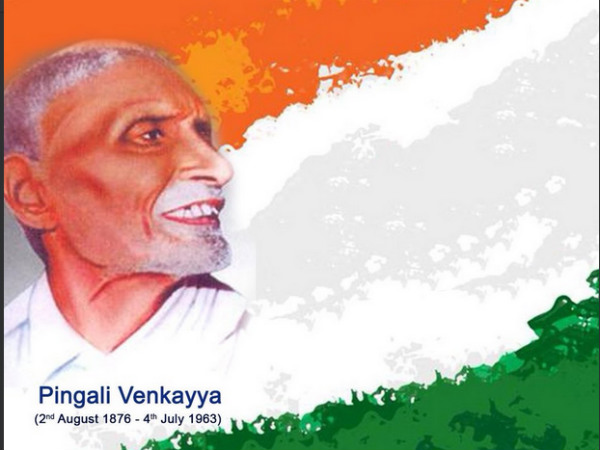
The flag of a country is its symbol of unity, power and ethos. And, if you combine its history with its sovereignty, then there is no better symbol of a country than its flag. For India, its Tiranga, was designed by Pingali Venkayya.
While the Indian flag has gone through many changes in the past years, its basic structure is attributed to Pingali Venkayya.

Early Life of Pingali Venkayya
Pingali Venkayya was born on August 2, 1876, in Bhatlapenumarru near Masulipatnam, Andhra Pradesh. He grew up in rural Andhra Pradesh, and after finishing his high school studies in Madras, he went to the University of Cambridge, England, to pursue his graduation. As a student, he grew to be a polymath, having specific interests in geology, education, agriculture and languages.
At a young age, he was attracted to the armed forces. Venkayya joined the British Indian Army at the age of 19. He was posted in South Africa during the Second Boer War (1899-1902) as part of the British Indian Army. Venkayya met Mahatma Gandhi during his posting in South Africa.
Venkayya’s Passion for Flags
Venkayya was very passionate about flags, and after returning to India, he dedicated his time to designing flags that could bind the entire nation as one. In 1916, he published a booklet, “A National Flag for India”, which contained 24 flag designs. In 1921, he met Gandhiji in Vijayawada and showed his booklet to him. Gandhiji was very satisfied with the design and recognized that we needed a national flag. So, Gandhiji asked Venkayya to design a flag at the National Congress Meeting in 1921. Venkayya’s initial design of the flag was made up of two red and green bands to indicate Hindus and Muslims, respectively – the two major religions in the country. The flag was called the Swaraj flag.
Gandhiji made some changes to the design by adding a white band to signify peace and a charkha to denote self-reliance. Later, the Congress committee in 1931 changed the red band to saffron. It also repositioned the bands, with saffron being put on top, followed by white and then by green. The charkha was placed in the middle of the flag on the white band. At the 1931 meeting, the Swaraj flag became the official flag of Congress, and it also became the symbol of the independence movement.
On June 23 1947, the Constituent Assembly set up a committee headed by Rajendra Prasad to select a flag for independent India. On July 14 1947, the committee suggested that the flag of the Indian National Congress be accepted as the National Flag of India with suitable modifications so that the flag is acceptable to all parties and communities. The spinning wheel of the flag was swapped by the chakra from the Lion Capital of Ashoka.
The new flag was proposed by Jawaharlal Nehru at the Constituent Assembly on July 22 1947, with deep saffron, white and dark green in equal ratios and the Ashoka wheel in blue in the centre. The Constituent Assembly approved the resolution unanimously. It started to serve as the national flag of India from August 15 1947, to January 26, 1950 and has served as the flag of the Republic of India after that.

Venkayya’s Nicknames
Various nicknames were given to Venkayya. Prominent among them was Jhanda Venkayya for his part in designing the flag. He was a passionate gemologist and was called Diamond Venkayya. And for his knowledge of the Japanese language, he was called Japan Venkayya. He was also known as Cotton Venkayya because of his dedication to researching staple varieties of cotton and for his detailed study of a particular variety called Cambodia Cotton.
He dedicated his whole life to the country and worked persistently to make India a free country. After India gained Independence, the contributions of Venkayya were forgotten. Venkayya passed away in a state of poverty on July 4 1963.

Honoring Venkayya
In 1992, N.T. Rama Rao, the former Chief Minister of Andhra Pradesh, revived the legacy of Venkayya when he included the statue of Pingali Venkayya as part of the 31 statues of prominent icons of Andhra Pradesh in Tank Bund, Hyderabad.
In 2009, Pingali Venkayya was posthumously honoured with a postage stamp for his involvement in the freedom struggle of India. In 2014, his name was also proposed for the Bharat Ratna.
In 2015, M. Venkaiah Naidu, the then Urban Development Minister, renamed the AIR Vijaywada after Venkayya and unveiled his statue on its premises.
On August 3 2022, Amit Shah, the Union Home Minister, released the commemorative postal stamp in honour of Pingali Venkayya during the Tiranga Utsav event.